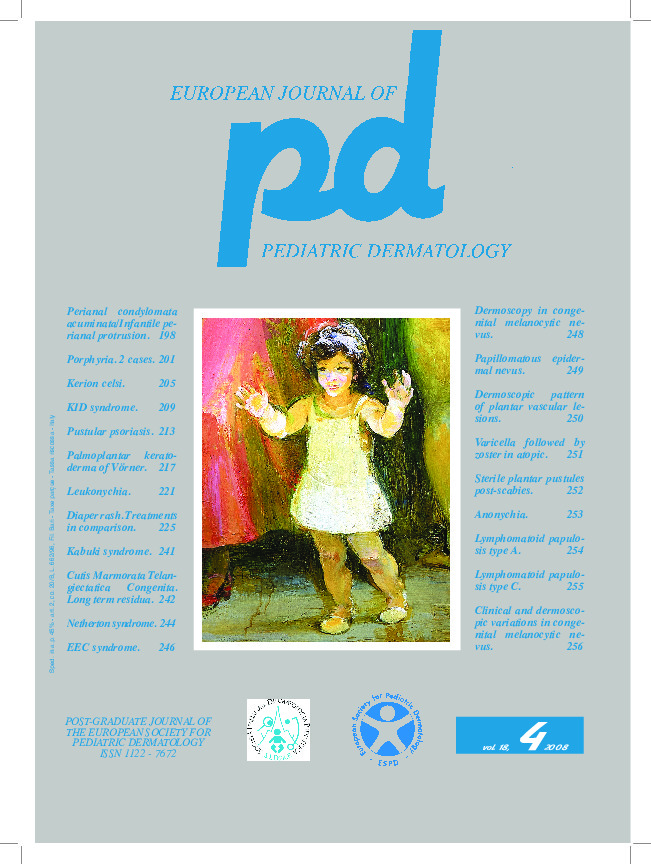Long term residua of Cutis Marmorata Telangiectatica Congenita.
Downloads
How to Cite
Bonifazi E., Garofalo L. 2008. Long term residua of Cutis Marmorata Telangiectatica Congenita. Eur. J. Pediat. Dermatol. 18 (4):242 -43.
pp. 242 - 243
Abstract
The persistence of the dermal and hypodermal lesions in Cutis Marmorata Telangiectatica Congenita favor the hypothesis of a complex vessel malformation. The clinical features and the rheography and thermography examinations (2) favor the hypothesis of a cutaneous vein ectasia. The histological findings, which are often inconclusive, showed sometimes a proliferation of cells of the capillary wall (2, 3). The most characteristic clinical feature, namely the reticulated atrophy, can distinguish CMTC from physiological livedo of the newborn, from persistent and diffuse livedo and from reticulated port-wine stain. The presence at birth and the lack of autoimmune disorders can differentiate CMTC from antiphospholipid syndrome and neonatal lupus. The lack of macrocephalia, aplasia cutis and ingravescent vein malformations can differentiate CMTC from cutis marmorata-macrocephalia syndrome, Adams Oliver and Bockenheimer syndromes.Vein dilatations are not usually visible at birth, maybe because of the purpuric and cyanotic discoloration. However, they get visible with time. The cutaneous atrophy, if not the only cause, at least contributes to the greater evidence of the veins. The pathogenesis of skin atrophy, which is not found in the common vessel malformations and in hemangioma, should be clarified.
Keywords
Cutis marmorata telangiectatica congenita

